
TRAINING NOTEBOOK ❘By CLAY MAGEE and BRANDON LEWIS
Forcible entry is a common fireground task. Companies across the United States get the job done using anything from the heel of a boot, irons, or high-dollar hydraulics. All too often, truck companies or the companies assigned forcible entry gain access and quickly shut the door. However, with the advancements the fire service has made regarding fire science, door control has been continuously preached over the past few years. We both have been on a fireground and opened a front door to take a quick glance at the layout and interior conditions on the ground floor only to be scolded and yelled at to “keep the door shut!”
We are both for door control; we teach it in all of our classes, especially in our forcible entry class. However, people seem to have lost sight of the knowledge you can gain after forcing the door such as building layout; smoke and fire conditions; and, ultimately, the reason why we are all here—protecting civilians. Firefighters can find this information just by taking some extra time to look and feel after forcing the door.
The 10 Percent Search
During our forcible entry classes, we teach what we call “The 10 Percent Search.” The average home in the United States is approximately 1,500 to 2,500 square feet based on the year that it was built. Homes built in the 1970s were closer to 1,600 square feet, while homes built today are closer to 2,300 square feet. If a home has more than one level, each level is usually close to one-half the total square footage of the living area; the smaller the house, the higher your search percentage will be (and vice versa for a larger home). However, for the average size home, you will be able to search/survey approximately 10 percent of the house from the exterior doors. The more primary means of entry and egress on a level, the higher the percentage you can survey.
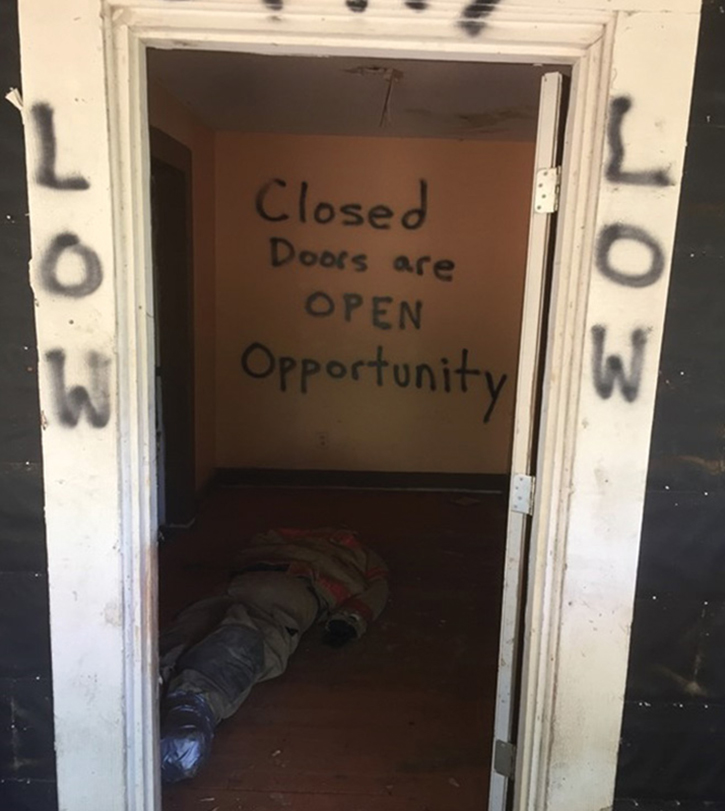
(1) Here, a victim lies just feet inside the door. (Photos by Clay Magee.)
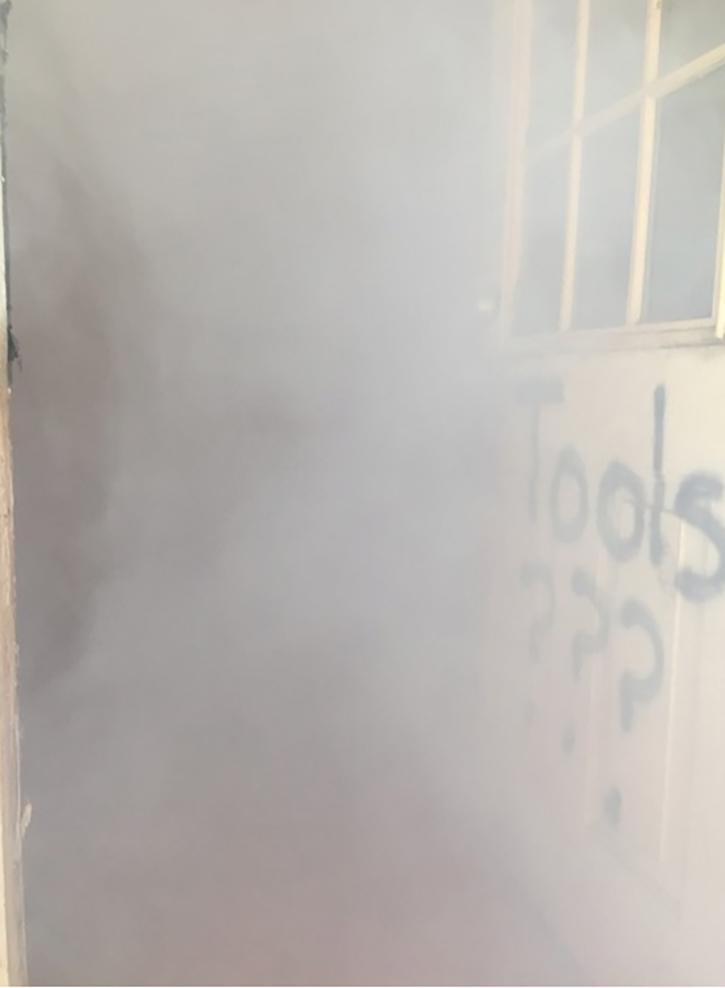
(2) Same victim, same door. Would you take the time to search this before controlling the door?

(3) Hook the halligan on the door frame to extend your search area.
This search is an action of opportunity and does not replace the primary search. Using small-scale search techniques that many firefighters learn during forcible entry class, you can effectively and efficiently survey and search around 10 percent of the level you have accessed while performing essential fireground tasks. If you are assigned to force entry, door control, a proactive rapid intervention team, or any other task that would entail controlling the primary means of entry or egress, you can perform quick surveys and searches of rooms without committing to an interior position. You can also quickly survey and search egress areas when conditions for a committed interior position are not favorable. Once again, the areas being searched are egress areas and, as such, are the paths the civilians are taking to get out of the building. These are priority search areas.
To give you an idea of why this is a priority search area, we turned to our friends at www.firefighterrescuesurvey.com. As of August 2019, their statistics from 1,129 voluntary surveys showed that seven percent of victims rescued (dead or alive) were found within six feet of an exterior door. These victims had a 49.6 percent survival rate.
Beginning the Search
The search starts when the door is forced. Depending on your department’s standard operating guidelines or personnel preference, you may need to practice some door control here. If you come to the door masked up, you are ready for the next step. If you force the door unmasked, control the door, mask up, and then proceed with the rest of the search. When you open the door, push it all the way back to the wall. You then must scan for life, fire, and layout.
Use the thermal imaging camera to scan conditions and look for victims. If smoke is not banked down all the way, look for victims visually, check the layout of the building, and examine fire conditions. If you are operating over a basement or above the fire, sound the floor with your halligan prior to entry. Call out (i.e., yell) for victims as you enter and listen for a response. Once you have sounded the floor, hook your halligan around the door frame, if needed. This allows you to extend 30 more inches into the occupancy without losing contact with the exit.
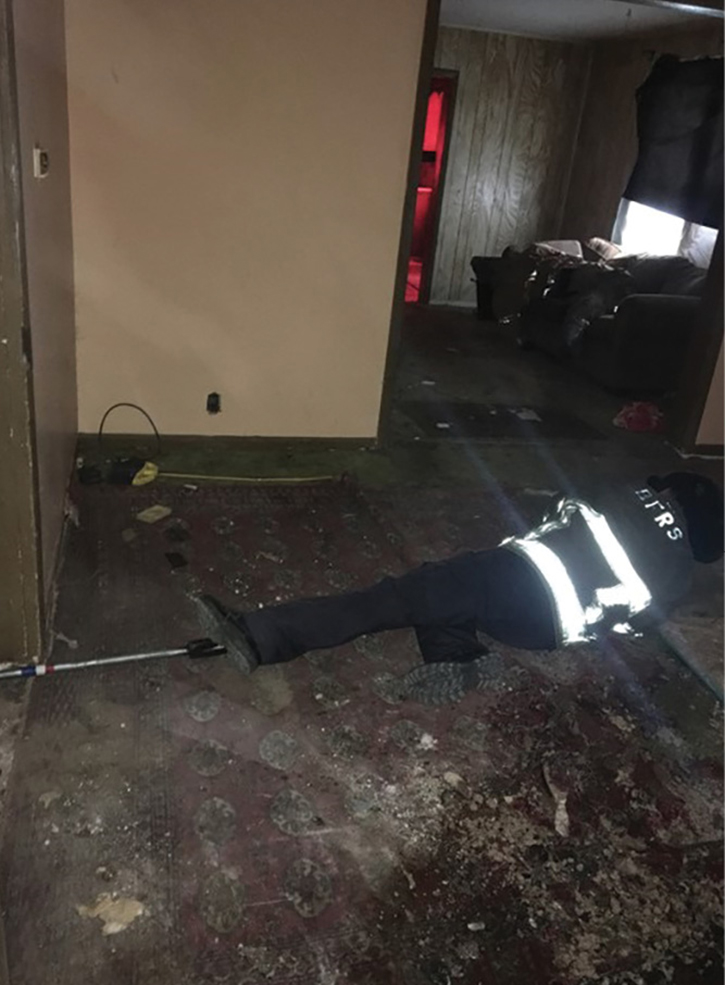
(4) Notice the distance that you can search visually when conditions are favorable; life, fire, layout. Also, notice the extended reach into the living room.
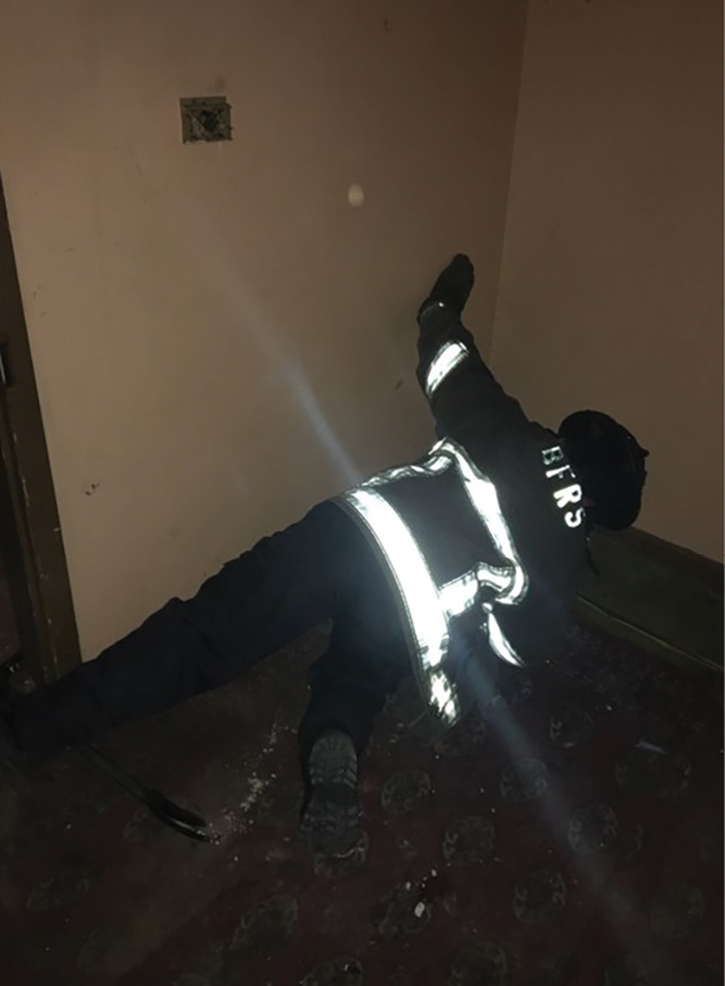
(5) Sweep from side to side and along the wall.
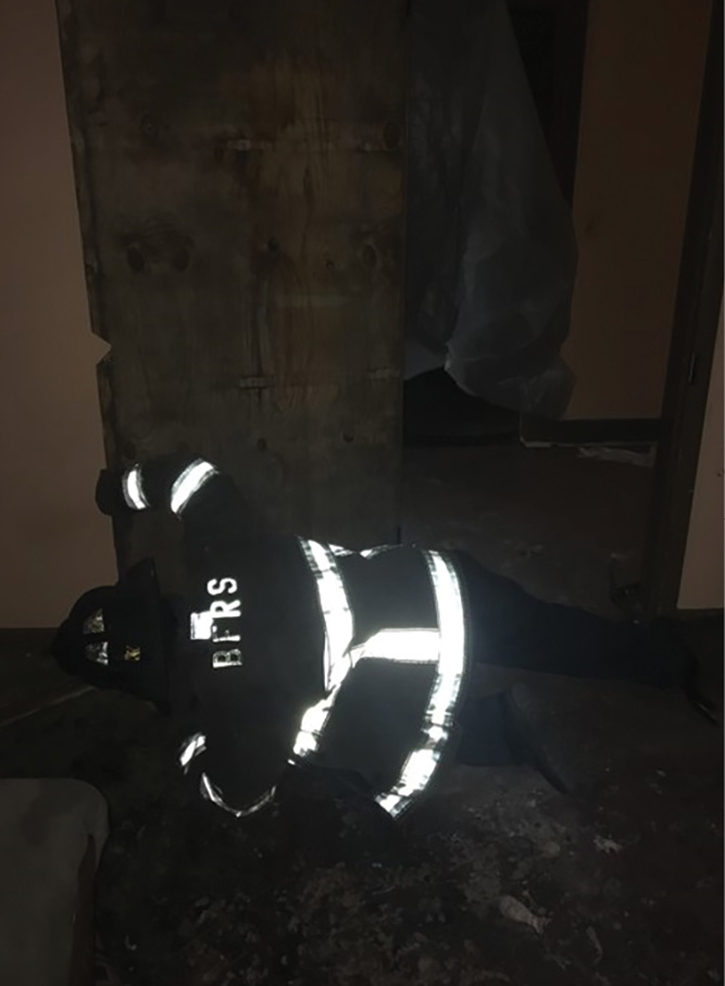
(6) Check behind the door and then pull it closed.
Search Options
To begin, hook your halligan on the latch side of the frame to give you extra reach on that side. Next, search on the lock side extending off your halligan, then come back across in front of the doorway as you search and grab the door as your anchor to extend your reach on the door side. Last, finish off your search by checking behind the door. Once the search is complete, pull the door and control it until the line is ready to go inside or your truck crew is ready to commit to an interior position. Report any findings regarding the floor plan, fire location, and smoke/heat conditions to your officer or command.
We teach this search in all of our classes. We want our students to perform it on all searches in class after we get past the basics. By knocking out a quick search in the egress area, we keep ourselves in a “victims first” mindset. After all, we are here for the victims, and every function we perform on the fireground should be for them.
CLAY MAGEE is an instructor with Magic City Truck Academy and a firefighter/paramedic with Birmingham (AL) Fire and Rescue. MaGee began his career with the East Oktibbeha (MS) Fire Department in 2004. He has a bachelor’s degree in business administration from Mississippi State University, an associate degree in fire science from Columbia Southern University, and multiple certifications from the Alabama Fire College. He has been published in Fire Engineering and contributes to the Fire Engineering Community. He is an organizer of the Deep South Fire Conference and has taught HOT classes at the Alabama Fire College, Louisiana State University—FETI, the Metro Atlanta Firefighters Conference (MAFFC), and multiple departments across the state of Alabama and has lectured at MAFFC.
BRANDON LEWIS is an instructor with the Magic City Truck Academy and has been a full-time firefighter with the Birmingham (AL) Fire and Rescue Service since 2009. He has an associate degree in fire science and multiple certifications through the Alabama Fire College. Lewis has been a fire service member since 2008.

